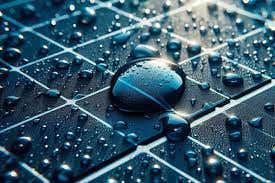Fog harvesting could be the answer for water-starved cities around the world
Researchers assess whether fog collection can supply water to cities facing severe droughts and help address long-term urban water stress.

Researchers assess whether fog collection can supply water to cities facing severe droughts. (CREDIT: CC BY-SA 4.0)
As cities grow, so does their demand for water, often surpassing the capacity of traditional sources. Many fast-expanding urban areas in dry regions struggle to supply their residents with enough clean water.
In some places, the situation is dire—Chile’s Atacama Desert is a prime example. The region has one of the lowest annual rainfall levels in the world, with some areas receiving less than one millimeter of precipitation per year.
Many urban centers in Chile, including Alto Hospicio, rely on underground aquifers for their water supply. However, these water reserves last recharged thousands of years ago, making them a non-renewable resource.
Chile’s water crisis is compounded by outdated policies and increasing urbanization. Nearly eight million people in the country face water shortages due to a decade-long megadrought, population growth, and water privatization laws that prioritize industrial use over public consumption.
Without urgent changes to water management strategies, the nation could experience even more severe depletion and shortages by 2050.
A New Source: Harvesting Fog
With rising water stress, researchers are exploring alternative sources, including non-traditional methods such as fog harvesting. Along the northern coast of Chile, dense fog, known locally as "camanchaca," regularly blankets the landscape.
This fog forms when cool ocean air interacts with warm land surfaces, creating a low-hanging cloud layer. It is a seasonal phenomenon, most common in winter and spring, when it hovers at elevations between 500 and 700 meters above sea level.
Researchers have assessed whether fog collection could provide much-needed relief to water-stressed cities. In a year-long study, a team led by Dr. Virginia Carter Gamberini from Universidad Mayor and Nathalie Verbrugghe from Université libre de Bruxelles investigated the feasibility of fog harvesting in Alto Hospicio.
Related Stories
This rapidly growing municipality, home to 10,000 people living in informal settlements, has limited access to piped water. Only 1.6% of these settlements are connected to the water network, and most rely on truck deliveries, a costly and inefficient system.
Fog harvesting works through a simple yet effective design: a mesh net is suspended between two poles, catching tiny water droplets as fog passes through. The collected moisture condenses and drips into a gutter, leading to storage tanks. This passive system requires no external energy and can function even in remote locations.
Water Potential and Practical Applications
During the study, researchers measured the water collection potential across a 100-square-kilometer area surrounding Alto Hospicio. They found that fog collectors could yield between 0.2 and 5 liters of water per square meter per day, with the highest yields occurring at elevated sites outside the city. At peak collection times, particularly in August and September 2024, the rate reached 10 liters per square meter per day. Complete study findings are published in the journal Frontiers in Environmental Science.
If scaled up, fog harvesting could supply significant amounts of water for various urban needs. Based on an average collection rate of 2.5 liters per square meter per day, a 17,000-square-meter network of collectors could generate 300,000 liters of water per week—enough to meet the needs of Alto Hospicio’s informal settlements. A smaller 110-square-meter setup could provide an annual supply of 100,000 liters for irrigation, helping sustain green spaces in the city.
The collected water could also support urban agriculture. A fog-fed hydroponic system could yield 15 to 20 kilograms of leafy vegetables per month. This would help enhance food security in arid regions where traditional farming is difficult due to water scarcity.
Future Challenges and Policy Integration
Despite its promise, fog harvesting is not a stand-alone solution. Infrastructure challenges, such as storage systems and distribution networks, must be addressed for it to be an effective urban water source. Additionally, fog availability varies with the seasons, which means harvested water must be supplemented with other sources.
For fog collection to succeed in other water-stressed cities, specific conditions must be met. Key factors include consistent fog density, strong wind patterns, and well-positioned landforms to intercept moisture. Researchers emphasize the importance of tailoring fog harvesting strategies to local climates and urban needs.
As climate change accelerates and urban populations grow, alternative water sources like fog harvesting may become essential components of sustainable city planning. “This research represents a notable shift in the perception of fog water use—from a rural, small-scale solution to a practical water resource for cities,” said Carter.
The study's findings highlight the potential of fog as a renewable water source for dryland cities. If policymakers integrate this method into national water strategies, it could help mitigate the impacts of water shortages, improve access to clean water, and enhance urban resilience.
“We hope to encourage decision-makers to consider fog harvesting as a complementary water source,” Carter said. “Incorporating it into urban planning could strengthen water security in rapidly growing cities, particularly in regions where climate change is worsening existing shortages.”
Note: Materials provided above by The Brighter Side of News. Content may be edited for style and length.
Like these kind of feel good stories? Get The Brighter Side of News' newsletter.
Rebecca Shavit
Science & Technology Journalist | Innovation Storyteller
Based in Los Angeles, Rebecca Shavit is a dedicated science and technology journalist who writes for The Brighter Side of News, an online publication committed to highlighting positive and transformative stories from around the world. With a passion for uncovering groundbreaking discoveries and innovations, she brings to light the scientific advancements shaping a better future. Her reporting spans a wide range of topics, from cutting-edge medical breakthroughs and artificial intelligence to green technology and space exploration. With a keen ability to translate complex concepts into engaging and accessible stories, she makes science and innovation relatable to a broad audience.



